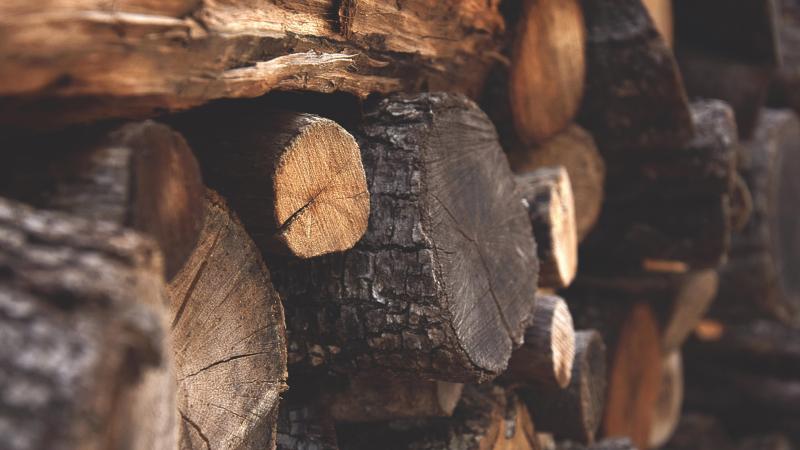Gabon
The timber or wood industry in Gabon is one of the main industries that fuels the economy of Gabon and was selected as the main pillars of development under the national strategy "Gabon Emergent 2025". Employing nearly 14 percent1 of the working population and located in the Congo Basin, the second largest tropical forest after Amazon, the Gabonese forest provides great opportunity for the country to further enhance the wood industry.
Although total production of logs has considerably fallen since 2007, value-added in the wood industry has increased, and the industry is export-oriented. Total production of logs was 1.6 million m3 in 2017 compared to 3.4 million m3 in 2007. However, the value add in the sector has risen owing to the increase in volume of the products of first transformation with the production of sawn wood, veneer sheets and plywood. In terms of exports, the wood exports from Gabon peaked between 2007 to 2010 with around USD 680 million exports a year. Since the drop in export value in 2011 to about USD 400 million, the export values are recovering steadily and recorded USD 489 million in 2016.
In terms of the revealed comparative advantage (RCA), the wood industry has shown significant RCA values for year 2001-2016. The values signifies that the wood industry has a natural and proven potential among Gabon's export products.
The trend of exports for the wood industry is a reflection of the crucial changes in policies to strengthen the wood industry. The first crucial policy change took place in 2001 with the introduction of the Forestry Code. This was the first move towards eliminating illegal logging. In 2009, the government banned the exports of unprocessed logs in a move to produce more value added products. The policy essentially forced the industry to move away from the profitable logging activities into more capital-intensive sub-chains such as sawn wood, veneer and plywood. The recovery in export value since 2012 is an indication that the policy has been successful in turning log exports to mainly three more value added exports, which are sawn wood, veneers and plywood.
In a recent change in direction towards sustainable forest management, the government of Gabon introduced a policy in September 2018 requiring that all forest concessionaires operating in Gabon to be certified by the Forest Stewardship Council (FSC), an international certification scheme that advocates socially equitable, environmentally sustainable and economically viable forest management. Ongoing concessionaires that fail to obtain the certification by 2022 will lose their concessions, which will be then reallocated by the government. This new policy is another positive commitment by the government to adhere to sustainability efforts. In addition, the certification boost the marketability of Gabonese wood products in foreign markets.

In terms of resources, the forests cover about 18 million hectares of the country and 12 million hectares are allocated for concessions of wood production. The rainforest in Gabon can be divided into three types: the evergreen forest, where most of the harvesting are taking place, located in the west of the country, known for two type of species, Okoume and Ozigo. The second forest type lies on the north west of the country called semi-deciduous forest known for its Limba, Wenge and Ayous trees. The third type of forest is the humid central Gabonese forest which covers most of the country possessing all types of timber that can be found in the region including Azobe, Mahogany, Aiele and Ayous. Although there are various different species of wood available in different parts of the country, Okoume species, one of the highest quality woods, dominates wood production due to its availability. However, there are huge potential to also develop other species of wood for niche products which is unexplored.
Since 2016, most of the wood products exported at least undergo one process of transformation thanks to Gabon's transformative plan for the wood industry. Gabon's connection to the Global Value Chain (GVC) for the wood industry is mainly through exports and some imports of machineries to support the industry. The main exports at product level for Gabon is sawn wood which recorded a huge growth between 2012 and 2016 at 8 percent annually with an export value of USD 322.7 million. The other highest exported wood products were veneer sheets and plywood
Although Gabon has increased its production in sawn wood and veneer sheets, the competition globally for both these products are quite high due to a few newcomers for tropical sawn wood global market. The global market share for sawn wood stood at around USD 3 billion. Thailand, a newcomer to the market, exported around USD 1.7 billion in 2017.
The veneer sheets exports for Gabon has seen a slight decrease of 1 percent for the period of 2012-2016 while plywood exports fell by 9 percent for the period of 2012-2016. As shown in Figure 5, despite a global increase in demand or imports for all the 3 products, Gabon's position is in the blue quadrant (losers in growing sectors). This verifies that these products are relevant products in the global value chain and has the opportunity to move to the green quadrant if it records growth in exports.
This document sets out the partnership strategy for Gabon identifying the most impactful interventions thanks to the promotion of Gabon's industry champions (wood and manganese), via Global Value Chains. The resulting interventions from the MCPS strategy document will include a wide variety of impactful and relevant projects such as construction of key road networks, building and optimization of energy access, improvement of forestry management, improvement of workers' skill through better training schools, improvement of Gabon's brand through better marketing and forestry management, and the undertaking of other industry promoting projects.